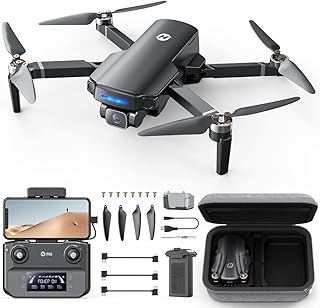Drones in Search and Rescue: Saving Lives with Aerial Technology
Drones, those nimble, remote-controlled aircraft, are revolutionizing search and rescue operations, becoming crucial tools in the fight against time and uncertainty. They offer a unique combination of capabilities that traditional methods lack, making them invaluable in locating missing persons, assessing disaster zones, and delivering vital supplies.
Here's how drones are changing the game:
1. Enhanced Visibility & Coverage:
* Rapid Deployment: Drones can be deployed quickly to remote or hazardous areas inaccessible to ground teams, covering vast areas in a short time.
* Aerial Perspective: They provide a bird's eye view, allowing searchers to identify potential clues and areas of interest that might be overlooked from the ground.
* Thermal Imaging: Advanced thermal cameras detect heat signatures, helping locate survivors trapped in debris or hidden in dense vegetation, even at night.
2. Improved Efficiency & Safety:
* Time-Saving: Drones reduce search time, allowing responders to concentrate resources on promising locations.
* Minimized Risk: By replacing human searchers in dangerous or challenging environments, they mitigate risk to rescue personnel.
* Data Collection: Drones equipped with cameras and sensors gather valuable data like photographs, videos, and 3D models of the search area, aiding in planning and decision-making.
3. Streamlined Communication & Logistics:
* Real-Time Updates: Live video feeds and data transmission enable immediate communication and coordination among responders.
* Targeted Deliveries: Drones can deliver essential medical supplies, emergency equipment, and communication devices to remote locations.
* Improved Situational Awareness: Drones provide crucial situational awareness by mapping disaster areas and identifying access routes for ground teams.
Examples of Drone Applications in Search and Rescue:
* Wildfires: Drones are used to assess fire damage, identify hotspots, and guide firefighting efforts.
* Natural Disasters: They help map disaster zones, locate survivors, and deliver aid to inaccessible areas.
* Missing Person Searches: Drones with thermal imaging capabilities scan vast areas, greatly increasing the chances of finding missing people.
* Mountain Rescue: Drones assist in locating hikers lost in mountainous terrain and deliver emergency supplies.
Challenges & Future Directions:
* Regulatory Framework: Development of clear regulations and licensing requirements is essential for safe and effective drone operation.
* Battery Life & Range: Continued advancements in battery technology and extended range capabilities are crucial for wider deployment.
* Data Analysis & Integration: Developing sophisticated systems for real-time data analysis and integration with existing emergency response infrastructure is critical.
In conclusion, drones have revolutionized search and rescue operations, bringing a new level of efficiency, safety, and effectiveness to the field. As technology continues to advance, drones will undoubtedly play an even larger role in saving lives and bringing hope to those in need.


